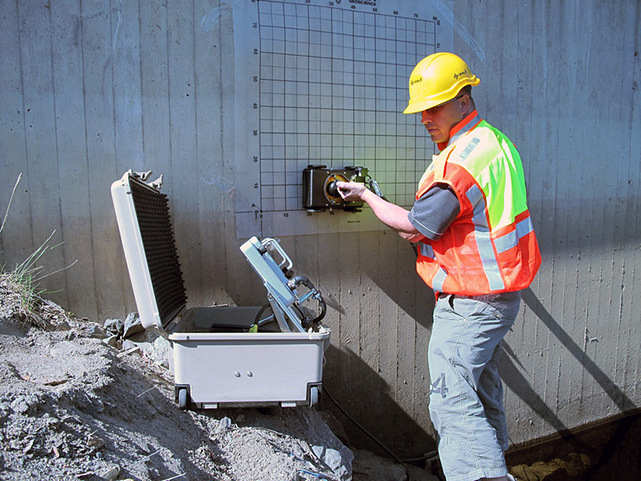Effective Concrete Scanning Methods for Construction Projects
Effective Concrete Scanning Methods for Construction Projects
Blog Article
Introduce the Transformative Power of Concrete Scanning in Making Best Use Of Effectiveness and Security
Concrete scanning has emerged as a vital device in the construction sector, supplying exceptional benefits in improving job efficiency and making certain safety and security standards. The transformative power of concrete scanning lies in its ability to supply comprehensive understandings and real-time information, changing exactly how projects are prepared and carried out.
Value of Concrete Scanning
Making certain the structural stability and security of construction projects starts with the vital step of conducting comprehensive concrete scanning. Concrete scanning is a non-destructive technique utilized to detect and map subsurface components within concrete structures.
Furthermore, concrete scanning assists in enhancing job timelines and budget by avoiding unanticipated costs and hold-ups that may arise due to unexpected blockages within the concrete. Ultimately, investing in detailed concrete scanning is an aggressive technique that boosts both effectiveness and safety in construction jobs.
Just How Concrete Scanning Works
Concrete scanning operates as an important tool in building and construction jobs by using innovative modern technologies to detect and map subsurface aspects without causing architectural damages. Ground Passing Through Radar (GPR) and Electromagnetic Induction (EMI) are two main approaches utilized in concrete scanning.
During the scanning procedure, the information gathered is examined in real-time, permitting instant recognition of potential dangers or barriers under the surface. By employing these innovative technologies, concrete scanning significantly lowers the risk of expensive damages and injuries on construction sites.
Benefits of Concrete Scanning
One of the main benefits of concrete scanning is the capability to identify and locate ingrained things such as rebar, post-tension cords, and conduits accurately. Concrete scanning helps in preparation and creating more properly, as it provides accurate details about the place and deepness of structural components.

Study: Concrete Scanning Success

In an additional case, a building business utilized 3D concrete scanning to analyze the condition old concrete structures in a historical building. The thorough scans offered valuable insights into the extent of degeneration and assisted focus on maintenance efforts efficiently. By proactively dealing with locations of concern identified with scanning, the business had the ability to extend the life-span of the framework and make sure resident safety.
These study underscore the transformative power of concrete scanning in enhancing effectiveness, accuracy, and safety and security in building projects.
Carrying Out Concrete Scanning in Projects
Implementing advanced scanning modern technologies throughout building and construction projects has ended up being progressively essential for improving precision and safety and security. By integrating concrete scanning into job More about the author preparation and implementation, building groups can determine potential hazards, such as rebar or post-tension wires, hidden within concrete frameworks. This aggressive method minimizes the risk of crashes, hold-ups, and costly rework, inevitably leading to much more effective project timelines and budgets.
To apply concrete scanning properly, job supervisors ought to team up closely with skilled scanning specialists to identify one of the most suitable scanning strategies for the particular project demands. Involving scanning professionals from the beginning of a project allows the team to create extensive scanning strategies that deal with vital locations of problem and make sure detailed information collection.
Moreover, integrating concrete scanning into routine job operations can improve decision-making procedures, as real-time scan information provides instant insights right into the condition of concrete structures - Concrete Scanning. This data-driven method promotes informed analytic and makes it possible for teams to make modifications quickly, cultivating a society of performance and security throughout the job lifecycle

Final Thought
To conclude, concrete scanning plays a crucial duty in improving efficiency and safety and security in building tasks. By making use of sophisticated technology to spot and map out underlying frameworks within concrete, this process assists to avoid pricey blunders, guarantee architectural integrity, and minimize threats on website. With the ability to discover covert components and supply accurate data, concrete scanning proves to be a valuable tool for optimizing project outcomes and making best use of total success.
Concrete scanning is a non-destructive method made use of to detect and map subsurface elements within concrete structures. Furthermore, concrete scanning helps in optimizing job timelines and budget plan by avoiding unanticipated costs and delays that might occur recommended you read due to unanticipated blockages within the concrete. One significant instance research involves a large-scale restoration job where concrete scanning played a critical function in making certain task success.In an additional case, a construction company used 3D concrete scanning to analyze the condition of aging concrete structures in a historic structure. By integrating concrete scanning into project preparation and implementation, construction teams can identify possible risks, such as rebar or post-tension cable televisions, concealed within concrete you could try this out frameworks.
Report this page